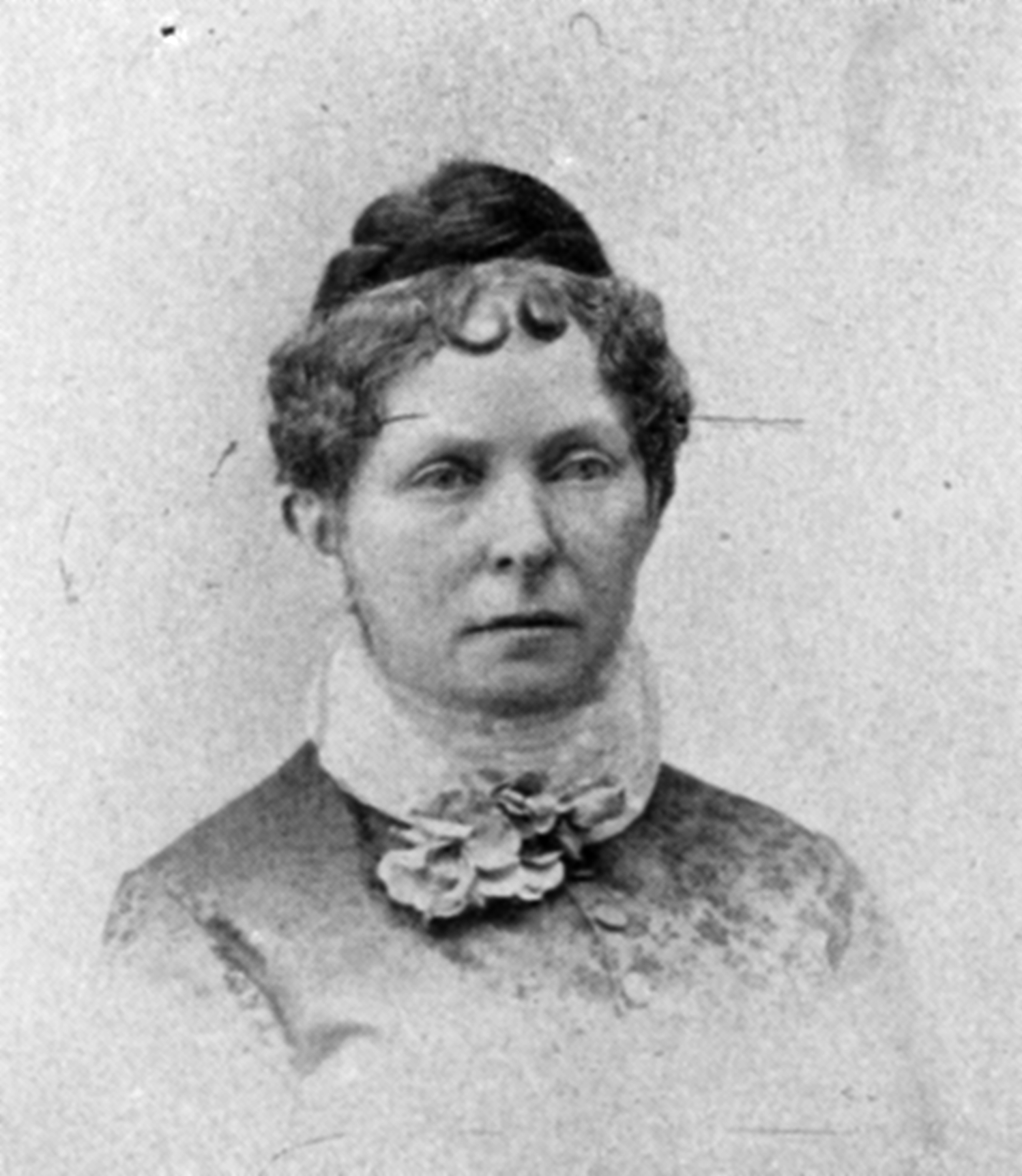Biography
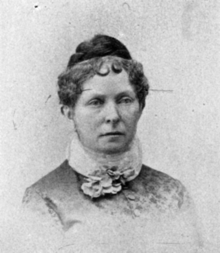
(“Metta Victoria Fuller Victor.”)
Metta Victoria Fuller Victor was a prolific nineteenth-century American woman writer. During her lifetime, she wrote poetry, novels, dime novels, and short stories. Born near Erie, Pennsylvania on March 2, 1831, she was well-educated at a local female seminary. She had an affinity for writing and she was only thirteen when a local paper printed one of her stories (“Metta Fuller Victor (1831-1885)”).
She published her first novel, Last Days of Tul, at age 15 (Foxwell). She later moved to New York with her older sister, Frances, another writer (“Metta Fuller Victor (1831-1885)”). In New York, she made many well-connected friends, most notably Rufus Wilmot Griswold, who would later introduce her to her future husband (Foxwell). In New York, she met and then married Orville Victor and together they raised nine children (Foxwell).
In addition to being a novelist, early in her career she also submitted her poetry to many newspapers, magazines, and other publishers. At first, she was considered a temperance writer with the publishing of The Senator’s Son and Fashionable Dissipations; this transition makes her late novel, The Dead Letter, even more interesting. After marrying Orville, she began writing dime novels for the dime novel publisher, Beadle and Adams. By the end of her career, she switched her writing style once more, no longer writing mysteries but humor novels (“Metta Fuller Victor (1831-1885)”).
During her long career, she wrote under several pseudonyms, often without particular patterns or consistency. She is known to have written under at least 4 known names during her lifetime. One critic notes, however, that “she used the pseudonym Mark Peabody for her humorous stories” and Seeley Regester for her two detective novels (Okuda).
Metta Victor’s relationship with the publisher of her dime novels, Beadle House or Beadle and Adams, began in 1858 when she became the editor of The Home: A Fireside Companion and Guide for the Wife, the Mother, the Sister and the Daughter (Stine).
The Dead Letter
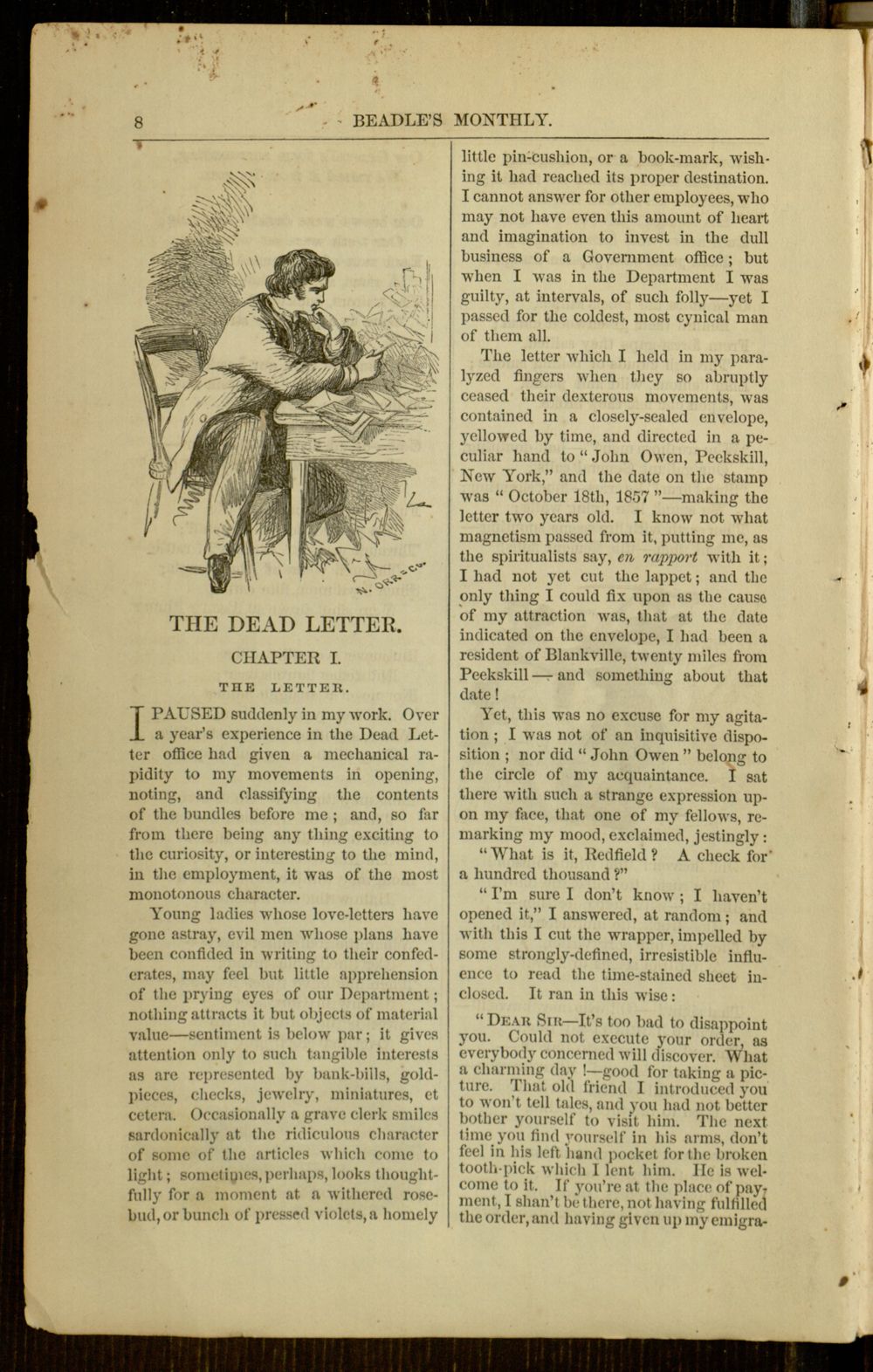
(Regester)
The Dead Letter follows the narrator, Richard Redfield, on his journey to solve the brutal murder of Henry Moreland. Motivated by his love for the deceased’s fiancé, Eleanor Argyll, he works tirelessly to discover the murderer and his motivations (Duquette). Over time, however, suspicion and gossip turn Richard into a likely suspect. Eventually, he is condemned by the Argyll family and denied his rightful position at the Argyll law office (Duquette). Because of this, Richard finds himself working at the Dead Letter Office where he stumbles across a letter proving Mr. Thorley was hired by James Argyll to murder Henry. The novel closes with Richard explaining his findings to the entire Argyll family and exposing James once and for all.
Following James’ removal from the family and community, Eleanor and Richard profess their love for one another. Eventually, the two marry and the novel closes with Richard’s reputation restored, his love finally by his side, and the murderers discovered. While a few people in the novel find happy endings, many are ruined by Moreland’s death and the novel falls nothing short of mysterious and sensational.
Historical Context
The Dead Letter is a dime novel that was published serially from January to August of 1866 (“Beadles Monthly”). This story was also republished by Beadle and Adams in both volumes 1 and 2 of the Beadles Monthly collections in 1866, with each of the stories listed as being written by Seeley Regester (“Beadles Monthly”). Poems such as “Balls Bluff” that made their way into the same monthlies reveal a lot about the values of their audiences of the time and the impacts of violence and war (Duquette). The stories and poems in Beadles and Adam’s dime novels were typically sensational and pandered to the American masses. The serial nature of these publications meant they needed to keep readers interested from week to week.
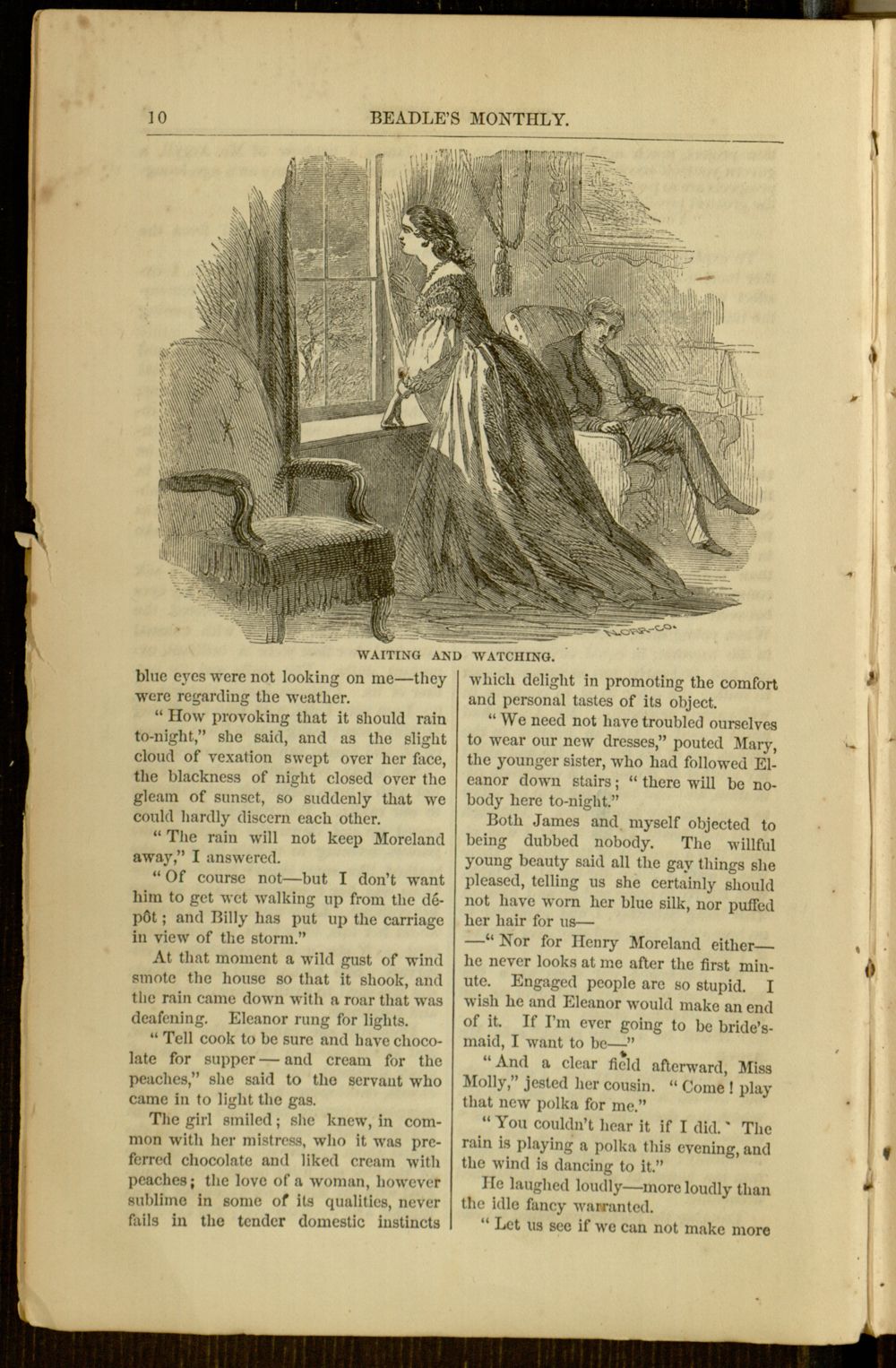
(Regester)
Additionally, the pictures that accompanied the initial publications can also reveal a great amount about what the publisher felt was most important about The Dead Letter. Combing through the uncovered 1866 editions of Beadle’s Monthly will not only show exactly what the readers in 1866 read in its most accurate form but also what was valued by readers at the time. For instance, there were many famous woodblock artists at the time who would be asked by publishers such as Beadle and Adams to create illustrations for their novels. The artist or artists who were chosen to illustrate The Dead Letter could reveal the amount of funding put into it each month as well as the reception of the audience for example if it was a well-loved monthly they may be willing to get more in-demand artists than if it was a monthly without a large following. As I work to research more for this novel, this is certainly something I will continue to look deeper into now that I have found the first printings of The Dead Letter.
Events taking place in 1866 America could have greatly contributed to the creation, dissemination, and reception of Victor’s work. At the time of The Dead Letter’s publication, the Civil War had been over for only a year. Times were changing greatly; in addition to the many deaths of the Civil War and the soldiers coming home, there was also a growing literacy rate in America: “David Kasser describes male literacy rates in 1861 as 90% in the northern states and about 70% among the free male population of the confederacy” (Carey). With this, books were sold in camps by traveling agents, mailed by families, and traded between enemy soldiers, which supports the idea that Victor may have been used to writing for a male military audience at the time of the creation of The Dead Letter (Carey).
Metta Victoria Fuller Victor’s The Dead Letter is not well known or recognized as the first American detective novel, with some critics even crediting Ann Katharine Green’s The Leavenworth Case, written in 1878, as being the first American detective novel despite the ten-year gap between this novel and Victor’s (Okuda). While it has been argued that this has been due to the sensational nature of Victor’s writing and the dime novel format in which it was published, understanding Metta Victor’s life, Beadle and Adam’s publications, The Dead Letter as a dime novel, and history, one can begin to piece together how the novel was created and why, perhaps, it has slipped through the cracks of literary scholarship.
Victor & Her Relevance
Metta Victoria Fuller Victor is important not only because of the initial popularity of her work or the value of a woman’s perspective from the nineteenth-century but also because of her place in literary history as the author of the first American detective fiction novel. She synthesized the integral elements of dime novels and romance fiction into the pages of a truly unique piece of detective fiction.
Readers across America have heard of authors such as Edgar Allan Poe and the innumerable short story and novel writers who came after. However, without the trailblazing work of Victor, Americans would not have such an interesting and engaging example of the first American detective fiction novel.
Metta Victor’s Major Publications
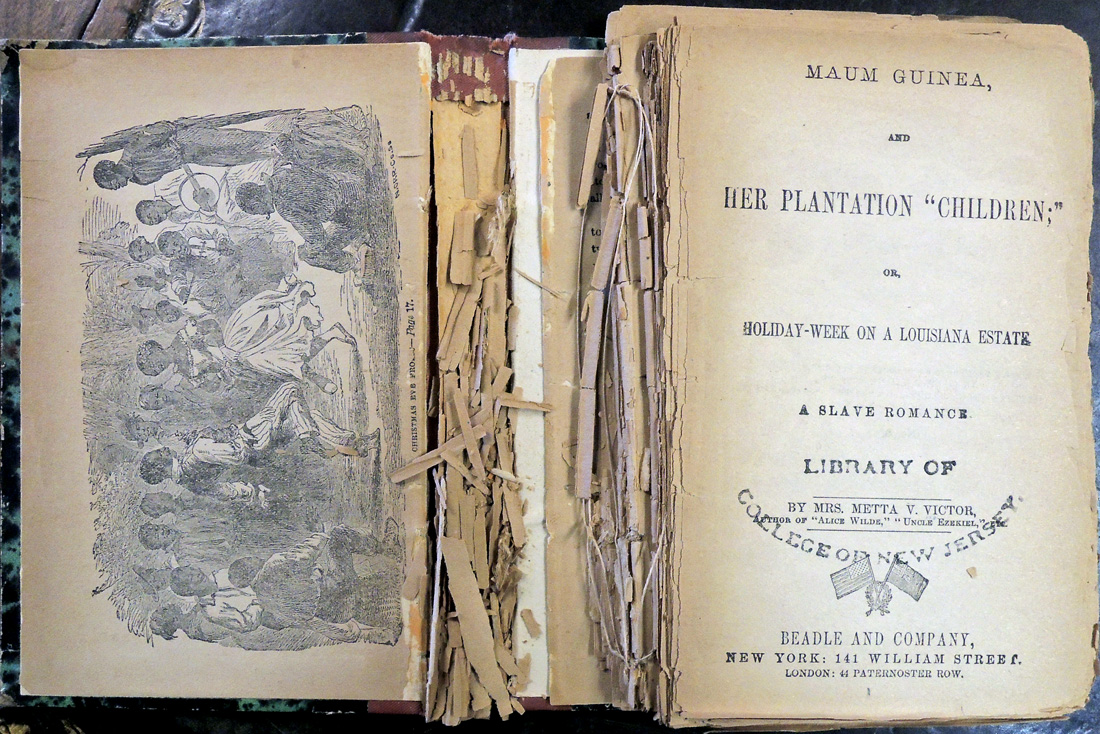
(“Princeton Graphic Arts Collection: First American Detective Novel”)
- The Bad Boy at Home, and His Experiences in Trying to Become an Editor (1883)
- Alice Wilde (1860)
- Fashionable Dissipations (1853)
- Figure Eight (1869)
- Maum Guinea (1861)
- The Blunders of a Bashful Man (1881)
- The Dead Letter (1866)
- The Senator’s Son (1853)
References & Related Links
References
“Beadle’s Monthly.” Periodicals. Digital Library @ Villanova University, Accessed 3 November 19.
Carey, Alison E. “Reading on the (Home) Front: Teaching Soldiers’ Dime Novels.” Teaching the Literacies of the American Civil War, 2016, pp. 81-90.
Duquette, Elizabeth. “The Office of The Dead Letter.” Arizona Quarterly: A Journal of American Literature, Culture, and Theory, vol. 69, no. 4, Dec. 2013, pp. 25–58, doi:10.1353/arq.2013.0026.
Foxwell, Elizabeth. “Metta Fuller Victor: A Sensational Life.” Mystery Scene, vol. 81, 2003, pp. 28-30.
“Metta Fuller Victor (1831-1885).” Hidden Hands: An Anthology of American Women Writers, 1790-1870, Edited by Lucy M. Freibert and Barbara A. White, Rutgers University Press, 1985, pp. 306-307.
“Metta Victoria Fuller Victor.” Wikipedia, 26 Sept 2019, Accessed 10 Dec 2019, https://en.wikipedia.org/wiki/Metta_Victoria_Fuller_Victor.
Okuda, Akiyo. “Metta Victoria Fuller Victor’s The Dead Letter (1864) and the Ride os Detecting Culture/Detective Fiction.” Clues, vol. 19, no. 2, 1998, pp. 35-57.
“Princeton Graphic Arts Collection: First American Detective Novel.” Princeton University, 8 May 2017, Accessed 10 Dec 2019, https://graphicarts.princeton.edu/2017/05/08/first-american-detective-novel/
Regester, Seeley. The Dead Letter. Beadles Monthly: April, Digital Library at Villanova University, 1866, pp. 309-327, https://digital.library.villanova.edu/Item/vudl:293113#?c=&m=&s=&cv=5&xywh=-5905%2C-1%2C14193%2C3639
Stine, Kate. “The Victors and the House of Beadle and Adams.” Mystery Scene, vol. 81, 2003 Fall 2003.
Related Links
Below are some additional valuable online resources that were consulted during research.
- Villanova’s Collection of Dime Novels
- Encyclopedia Brittanica’s Definition of Dime Novel
- The Bad Boy at Home, and His Experiences in Trying to Become an Editor (1883)
- Alice Wilde (1860)
- Fashionable Dissipations (1853)
- Figure Eight (1869)
- Maum Guinea (1861)
- The Blunders of a Bashful Man (1881)
- The Dead Letter (1866)
- The Senator’s Son (1853)
